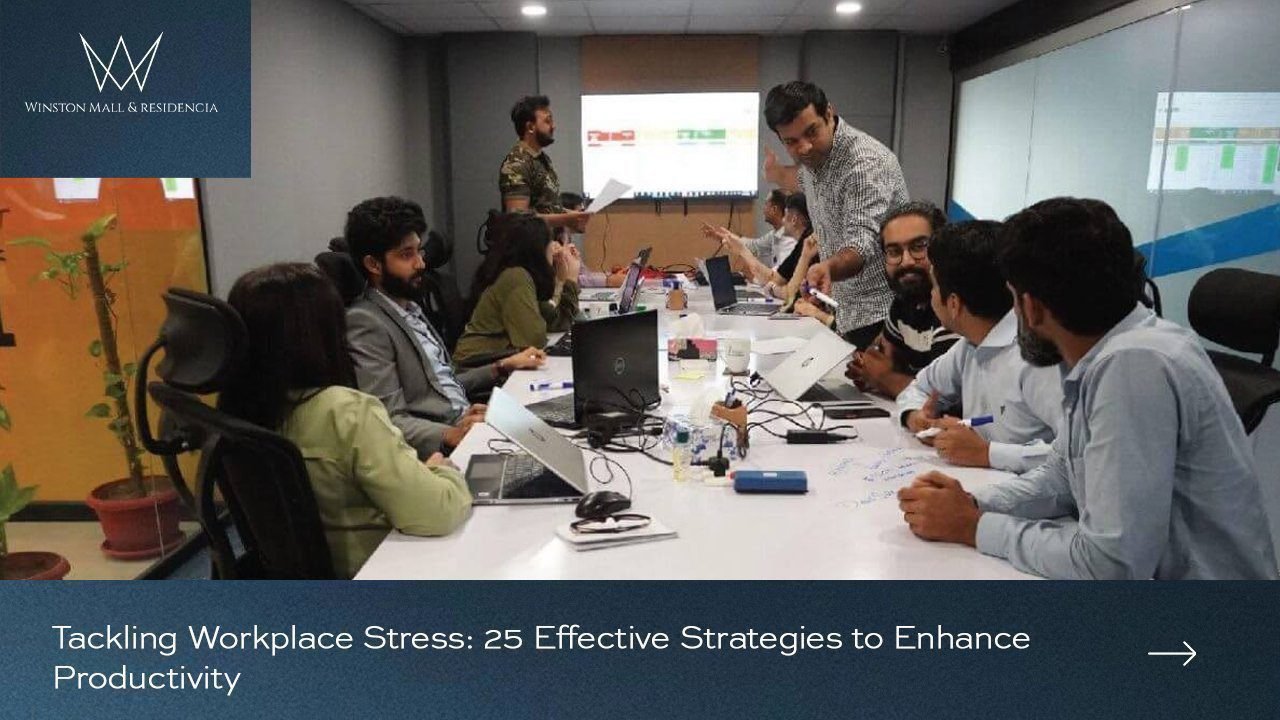Stress in the workplace is not a personal issue but a universal challenge that employees at all levels face in all industries. If not checked, stress can lead to serious health issues, including chronic headaches, stomach problems, high blood pressure, and a weakened immune system. In addition to the physical health, unmanaged stress can impair mental focus and teamwork, hence affecting productivity in the workplace.
So, what do you do to deal with these issues and have a more productive work environment? Well, the key could lie in proactive stress management. Here are 25 actionable ways through which one can reduce stress at the workplace and enjoy peak productivity by his team.
Table of Contents
ToggleOrganize Walking Teams
Exercise is one of the surest ways to reduce stress. Organize walking teams that allow the employees to take short walks during work hours. You can have a team that takes a walk during the lunch hour or one that assists in helping everyone cross the mid-afternoon energy low with a short brisk walk. This will give them the much-needed break and physical exercise to recharge.
Encourage De-Caffeination
Although caffeine is a stimulant that can raise alertness and emotions temporarily, it may also add to stress levels. Many people use caffeine primarily in the morning, so you may want to offer decaf coffee in the break room during the afternoon hours. This helps avoid adding more stress during potentially tense parts of the day.
Introduce Weekly Stress-Reducing Activities
The overall morale and stress level of the employees can be dramatically enhanced by introducing a weekly stress-relieving exercise routine. For example, one can bring a yoga teacher to the office or invite a masseuse who comes during mid-week morning times. Adult coloring books left in common areas can also create mindfulness as well as relaxation.
Open Door Policy
Stress often results not because of workload but due to uncertainties related to the direction or outcome of the project. An open-door policy where workers are free to raise questions and concerns directly to the supervisor and the team leaders would help. The work environment will feel more friendly when uncertainties have been resolved.
Positive Message Focus
The language employed within the company is an influential characteristic of the culture of the company. Work with positive, good-relation, and morale-developing language. This relates to personalizing, inspiring, and involving people that make the workplace culture upbeat.
Enhance Office Attractiveness
The physical environment may affect the level of stress and mood in an employee. Office spaces should be more natural and colorful. Employees should be encouraged to personalize their work areas, which can be inviting and comfortable, reduce stress, and enhance productivity.
Active Design in the Workspace
Encouraging physical movement can enhance both physical and mental health. The design of the workspace will affect movement; for example, using printers farther from desks or having open layouts that encourage one to walk. Often, subtle design choices result in increased physical activity throughout the day, which has a direct impact on the management of stress and overall well-being.
Flexible Work Hours
Flexible work hours would reduce stress to a large extent because it improves work-life balance and gives employees better control of their work. Workers would have more control as to what they do and when they do it-for example, dropping the children off at school.
Clearly Direct Communication
All communications from leadership through meetings, emails, and memos must be very direct and to the point. Clear communication eliminates all the time and energy required for employees to interpret the messages, thus being able to focus fully on their tasks.
Tech-Free Time
Having free or tech-free periods can prove to be very useful to reduce the stress. Conduct an unplugged afternoon program where people switch off digital notifications, work on only one activity, and try to enhance their concentration by being un-diverted and so increase the overall level of performance.
Nutritious Snacks
Healthy snacks at work prevent stress due to hunger and poor nutrition, which often causes energy crashes. Fruits, nuts, and yogurt are some good sources of energy that will last long without the adverse effects of sugar or caffeine spikes.
Motivational Quotes
Inclusive inspirational quotes placed subtly throughout the workspace and encouraged weekly, via newsletters, bulletin boards, or digital displays to remind employees of a motivational word or phrase when needed without crowding the space.
Meaningful Meetings
Eliminate unnecessary meetings. If the information may be forwarded via email, then forward it and forego holding a meeting over it. Make the valuable time of your employees worth their while by making sure that each group of scheduled meetings is justified and has a well-defined purpose.
Clearly Defined Expectations
Ensure each employee is aware of their roles and responsibilities concerning the given jobs. A defined response on what is expected regarding management of tasks, deadlines, and the accomplishment would decrease the uncertainty and nervousness pertaining to work in members.
Favourite employees’ work effort- express sincere appreciation daily and express thanks for every achievement made. Compliments act as effective ways to remove stress especially at stressed settings thus developing a conducive atmosphere to stay at the workplace. Organized Common Rooms Shared facilities like the kitchen and toilet must be well-taken care of; common areas, like a common meeting room, need cleaning. An organized workstation means not only reducing tension levels, but it also enables workability due to readily accessible needed tools. Knows your vision and has Impact- Being able to influence things within one’s ability- Know what is wanted
Help employees appreciate the impact of their jobs upon the organization and customers. The ‘why’ banishes the stress; that is what gives greater significance and fulfillment to daily assignments.
Spontaneous Fun Activities
Brighten up the atmosphere with surprises such as a flash mob or brief dance session that will break up the tension with fun and activity and serve as the cure for stress.
You could organize a pet day whereby people can bring their pets to work or interact with therapy animals. It has been proven that pets, especially puppies, reduce stress and elevate mood.
Provided Breaks
Encourage employees to take their lunch breaks completely away from the workstation. Either going out for lunch or taking it in a well-appointed break room, a change of scenery can be refreshing and reduce feelings of confinement.
Available Resources
Give the workforce the right tools and equipment to do their job. Answer requests for new tools or updates to current ones in a timely manner so as not to frustrate them and allow them to perform their jobs better.
Community Involvement
Have community service days to engage employees with the larger community. Volunteering will shift the focus away from personal stressors and give perspective through the act of helping others.
Documentation
Keep detailed records of decisions and project stages. Recording the processes and outcomes helps bring clarity to past decisions as well as reduces stress because of uncertainty about past action.
Technology Investments
Investment in reliable and modern technology simplifies work processes. Better tools and systems can immensely reduce stress due to regular glitches and downtime, improving the entire workplace productivity.
Avoid Micromanaging
Trust the skills of your employees and let them own their tasks. Micromanaging will demotivate and stress the employees unnecessarily. Let the employees bring new ideas to the table and prove their capabilities.




